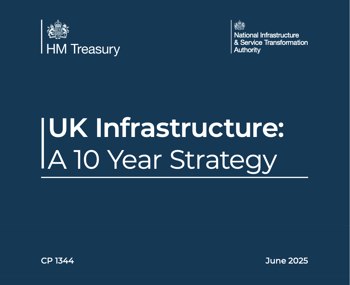Business process reengineering BPR
Contents |
[edit] Introduction
Business process reengineering (BPR) is a management technique that was designed to help businesses evaluate and streamline their processes. BPR requires that organisations deconstruct and examine how things are done and assess how resources are used. The goal of BPR is to move an organisation away from being function based and move it towards being process based. This should help the organisation eliminate wasteful practices.
BPR can include the following steps:
- Define processes.
- Analyse processes.
- Identify and analyse ways to make improvements.
- Design processes for the future.
- Develop changes for the future.
- Put changes in place.
BPR can also referred to as business process redesign, business transformation or business process change management. It exists alongside (and overlaps with) other management approaches including:
By initiating significant change, BPR separates itself from other management methods that seek to improve processes rather than remove them entirely.
[edit] History
In 1990, Michael Hammer formally introduced the concept of reengineering in an article entitled, “Reengineering Work: Don't Automate, Obliterate" published in the Harvard Business Review. As a former professor of computer science at the Massachusetts Institute of Technology (MIT), Hammer put technology at the forefront of this business approach.
He based his article on the premise that managers could help organisations improve their processes and reduce costs using technology more effectively. His theory encouraged manufacturers to remove processes that did not add value for customers rather than seek ways to accelerate those processes (particularly through the use of technology). Instead, he believed technology should be used to support essential business processes through the development of information technology (IT) systems and networks.
[edit] Expanding the role of technology
Hammer’s concept rightfully anticipated the significance technology would play in business. While computers continued to support administrative activities, through BPR they also served as an essential collaborative tool in creating initiatives that could add value to whatever product or service was provided to the customer. Groundbreaking at the time, some of these technologies, which are commonplace today, include:
- Shared data and databases.
- Telecommunications networks.
- Wireless technologies.
- Portable technologies.
- Tracking systems.
By 1993, many manufacturing organisations had embraced some form of reengineering - or planned to do so in the near future. However, some perceived shortcomings were soon realised.
Critics felt the approach had a negative impact on morale due to its dehumanising treatment of people in the workforce (particularly in its tendency to require significant reductions in staffing). Others felt that technology was over emphasised.
[edit] BPR and construction
In the construction industry, BPR (in the form of Construction Management Process Reengineering) has been widely adopted as a method of change management in an industry that has been notorious for its lack of change.
Historically, the UK construction industry has been criticised for being wasteful, adversarial, fragmented, dominated by single disciplines, reluctant to innovate and poor at disseminating knowledge, thus making it a strong candidate for change. However, despite a great number of reports about problems in the industry, and numerous attempts to improve efficiency, the perception or poor performance persists.
One issue that may be related to negative perceptions of the construction industry is the construction management process itself. The complexity of the process may prevent business owners from realising its inefficiencies and identifying its shortcomings. This can result in practices that may be redundant, wasteful and ineffective and create a management structure so far removed from the execution of processes that it is unable to change the situation.
[edit] Construction Management Process Reengineering (CMPR)
As a potential method of improving efficiency, Construction Management Process Reengineering (CMPR) reviews construction management processes in three steps - from representation to transformation to evaluation - and then proceeds with reengineering activity once the appropriate course of action is determined.
As with manufacturing, technology is not used to accelerate existing processes. Instead, it is used to gather data and identify new methods of work that would eliminate waste and focus on customer satisfaction.
Although the construction industry has been slow to adopt new technology in the past, many companies are paying more attention to software tools, digitisation, data, detectors, monitoring and so on. Software products are becoming more advanced, with features being added constantly. For example, by using cloud-based software platforms, quantity surveyors are able to efficiently manage design, establishing a working budget for structural and finishing elements, taking into account architectural specifications, schedules and services. Such an intelligent and streamlined approach to construction cost estimating significantly improves transparency, accountability and efficiency. If management is better able to evaluate the parameters of an existing process (such as cost estimating), the likelihood of success will be greatly increased.
With inefficient processes exposed, a revised operational method can be developed, unnecessary specialisation can be revealed, and those workers can be retrained for different tasks. Ideally, this results in a more efficient and competitive organisation based on processes that are beneficial to the customer.
[edit] Related articles on Designing Buildings Wiki
- Accelerating change: A report by the Strategic Forum for Construction.
- Advanced construction technology.
- Change management on construction projects.
- Construction manager.
- Information and communications technology in construction.
- Lean construction.
- Reinventing construction: a route to higher productivity.
- Supply chain management in construction.
Featured articles and news
RTPI leader to become new CIOB Chief Executive Officer
Dr Victoria Hills MRTPI, FICE to take over after Caroline Gumble’s departure.
Social and affordable housing, a long term plan for delivery
The “Delivering a Decade of Renewal for Social and Affordable Housing” strategy sets out future path.
A change to adoptive architecture
Effects of global weather warming on architectural detailing, material choice and human interaction.
The proposed publicly owned and backed subsidiary of Homes England, to facilitate new homes.
How big is the problem and what can we do to mitigate the effects?
Overheating guidance and tools for building designers
A number of cool guides to help with the heat.
The UK's Modern Industrial Strategy: A 10 year plan
Previous consultation criticism, current key elements and general support with some persisting reservations.
Building Safety Regulator reforms
New roles, new staff and a new fast track service pave the way for a single construction regulator.
Architectural Technologist CPDs and Communications
CIAT CPD… and how you can do it!
Cooling centres and cool spaces
Managing extreme heat in cities by directing the public to places for heat stress relief and water sources.
Winter gardens: A brief history and warm variations
Extending the season with glass in different forms and terms.
Restoring Great Yarmouth's Winter Gardens
Transforming one of the least sustainable constructions imaginable.
Construction Skills Mission Board launch sector drive
Newly formed government and industry collaboration set strategy for recruiting an additional 100,000 construction workers a year.
New Architects Code comes into effect in September 2025
ARB Architects Code of Conduct and Practice available with ongoing consultation regarding guidance.
Welsh Skills Body (Medr) launches ambitious plan
The new skills body brings together funding and regulation of tertiary education and research for the devolved nation.
Paul Gandy FCIOB announced as next CIOB President
Former Tilbury Douglas CEO takes helm.
UK Infrastructure: A 10 Year Strategy. In brief with reactions
With the National Infrastructure and Service Transformation Authority (NISTA).























